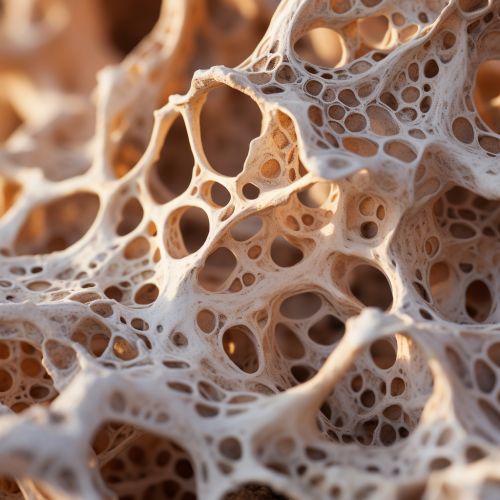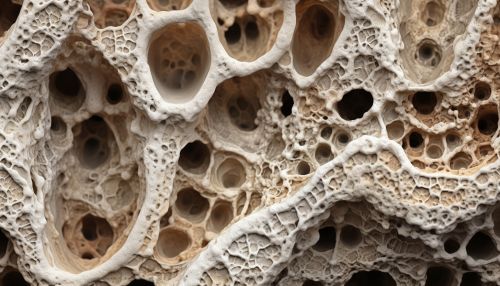Bone Mineralization
Introduction
Bone mineralization is a crucial biological process that involves the deposition of minerals into a protein matrix, forming the hard and rigid structure of the bone. This process is essential for the development and maintenance of a healthy skeletal system, providing the necessary strength and rigidity to the bones, enabling them to support the body and protect vital organs.


Process of Bone Mineralization
Bone mineralization is a complex process that involves several stages, including the production of a protein matrix, the deposition of minerals, and the maturation of the mineralized matrix. The process begins with the production of a protein matrix by osteoblasts, the bone-forming cells. This matrix, composed primarily of collagen, provides a scaffold for the deposition of minerals.
The primary mineral involved in bone mineralization is hydroxyapatite, a form of calcium phosphate. The deposition of hydroxyapatite into the protein matrix is facilitated by several proteins, including osteocalcin and bone sialoprotein. These proteins bind to the hydroxyapatite crystals, promoting their growth and incorporation into the matrix.
Following the deposition of minerals, the matrix undergoes a maturation process, during which the mineralized matrix becomes denser and more organized. This maturation process is essential for the development of a strong and rigid bone structure.
Regulation of Bone Mineralization
The process of bone mineralization is tightly regulated by a variety of factors, including hormones, vitamins, and minerals.
Parathyroid hormone (PTH) and calcitonin are two key hormones involved in the regulation of bone mineralization. PTH promotes the release of calcium from the bones into the bloodstream, while calcitonin inhibits this process, helping to maintain a balanced level of calcium in the body.
Vitamin D is another important regulator of bone mineralization. It promotes the absorption of calcium and phosphate from the diet, which are essential for the mineralization process. Deficiency in vitamin D can lead to rickets in children and osteomalacia in adults, conditions characterized by soft and weak bones.
Minerals such as calcium and phosphate are also crucial for bone mineralization. Adequate intake of these minerals is essential for the normal process of bone mineralization.
Disorders of Bone Mineralization
Disorders of bone mineralization can lead to a variety of skeletal abnormalities and health problems. These disorders can be caused by a variety of factors, including genetic mutations, nutritional deficiencies, and hormonal imbalances.
One common disorder of bone mineralization is osteoporosis, a condition characterized by low bone mass and deterioration of bone tissue. This leads to increased bone fragility and risk of fracture. Osteoporosis is often associated with aging and is more common in women than in men.
Another disorder of bone mineralization is rickets, a condition that affects children and is caused by a deficiency in vitamin D, calcium, or phosphate. Rickets leads to soft and weak bones, resulting in skeletal deformities such as bowed legs.
Conclusion
Bone mineralization is a complex and tightly regulated process that is essential for the development and maintenance of a healthy skeletal system. Understanding the process of bone mineralization and the factors that regulate it can help in the prevention and treatment of disorders related to bone mineralization.
